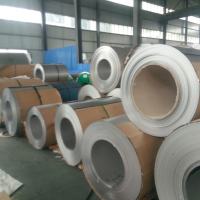High Performance Alloys are continuing to have a growing impact on industry, but every HPA offers something different and choosing the right one for your sector can be the difference between success and failure.
First up…aerospace
The HPAs used in aerospace are generally required to be resistant to high temperature, have excellent strength or a combination of both. In addition to these characteristics, grades are also selected for their ability to resist corrosion, oxidation, high pressure and thermal shock.
Many are heat treatable and this offers further improvements in certain mechanical properties when compared to material that has been annealed or in cold worked condition.
Some of the common application areas where High Performance Alloys are used within the aerospace industry include afterburner parts, valves, bolts and heat exchangers.
Commonly used HPAs might come from the following ranges:
• Nimonics®
• Inconels®
• Waspaloy
• Rene 41
Aerospace customers tend to look for a wire manufacturer that has achieved the AS9100 quality standard for the industry.
Petrochemical
In the harsh petrochemical environment, alloys with good resistance to corrosion are an absolute must.
To work at optimum levels, wire needs to be made from materials that are resistant to chemical attack in acidic, alkaline or other complex environments whilst maintaining reasonable strength. For example, in solutions of hydrochloric acid and sulfuric acid, alloys containing the nickel-molybdenum or nickel-chromium-molybdenum system often offer some of the best resistance to corrosion.
These alloys may be used for springs in valves in chemical processing plants, but, as mentioned previously, other alloys can fill the void if the chemicals are different.
Other functions where these alloys could be used are in filters or meshes that are used to remove impurities from liquids, as well as applications that are prone to high wear.
Commonly used HPAs within petrochemical applications are:
• Hastelloy C-276
• Hastelloy C-22
• Hastelloy C-4
• Phynox
• C-2000
• Alloy 400
Space Exploration
With the pressure and unique conditions of space, the temperature range for alloys is vast and goes from cryogenic to high.
The ideal HPA must be able to function in extreme conditions and our material can be found in numerous spring applications that are used to support space exploration.
Popular HPAs are:
• X-750
• 718
• Phynox
• C-902
• Rene 41
Marine
It is important that our HPAs are resistant to damage by sea water and being exposed to extreme environments and weather. This means that materials need to be resistant to both chemical and mechanical attack and the associated challenges that come with it.
Our alloys are often used for springs in valves, pumps and for fasteners and locking wire. These components may be found in offshore oil rigs, desalination plants or even in submersibles for deep sea exploration.
The marine sector will often choose to use the following alloys:
• Monel® 400
• Inconel® 625
• Duplex
• Super Duplex
• Hastelloy C-276
• Phynox†
• MP35N
Automotive
To work in the automotive industry, HPAs must be versatile enough to operate in various temperatures whilst simultaneously being resistant to chemical attack and withstanding severe mechanical strain. They can be found in several different components, ranging from sealing rings and fasteners in engine parts, to spark plugs and even in safety devices, such as airbags.
Many of the alloys selected for use within the sector are age-hardenable to improve their mechanical properties. This process also maintains its chemical resistance and can offer critical weight savings compared to some lower alloy steels.
HPAs regularly used in automotive include:
• Alloy X-750
• Alloy A286
• Alloy 718
• Alloy 600/601
• Alloy 90
• Alloy 75
Nuclear
Alloys used in the nuclear industry must be anti-corrosive and able to work in high temperatures. Some are used in the reactors themselves and will therefore encounter harmful substances that would damage regular wire. Specific requirements for alloy compositions should be carefully considered as there is little room for error.
High Performance Alloys used in nuclear feature:
• Alloy 80A
• Alloy 718
• Alloy X-750
• Alloy 90
• 316L
Medical
HPA materials selected for use in medical applications are generally chosen for one overriding factor, which is bio-compatibility. However, there will also be the need for other alloys that are not in direct contact with the human body and are used as part of the wider support infrastructure.
High Performance Alloys that are biocompatible can work safely in direct contact with living tissue and this might be for items, such as implants, surgical tools and syringe needles. The key properties mean that the material will not break down when in contact with the corrosive fluids found within the body and leach any potential harmful toxins into the human body.
Non-biocompatible applications may include wire for springs in ventilators and other medical support equipment.
Common alloys used in medical applications include:
• Phynox
• MP35N
• 316 LVM
• Haynes 25
• Nickel 200/201
• 316L
In Summary
There is a lot of overlap between sectors and requirements, particularly around characteristics such as high strength, corrosion and temperature resistance.





